



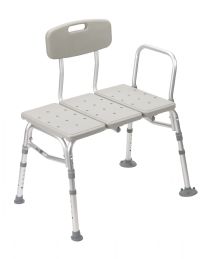
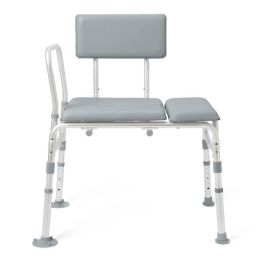
~2.jpg&newheight=260&quality=80)



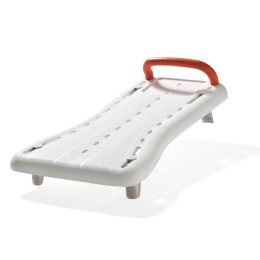


.jpg&newheight=260&quality=80)


.jpg&newheight=260&quality=80)





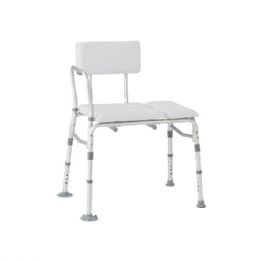





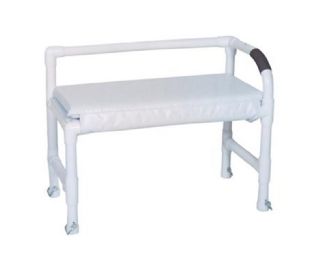
.jpg&newheight=260&quality=80)
Tub transfer benches consist of a stable, sturdy frame with four legs, two of which rest on the bathroom floor while the other two sit inside the bathtub. The bench has a wide, flat seat that extends from outside the tub to the inside, allowing the user to sit down and slide across the bench to enter or exit the tub safely. The legs of the bench are adjustable in height to ensure that the seat is at the right level to make the transfer comfortable and safe.
There are different styles of tub transfer benches available in the market, each designed to cater to specific needs. The most common styles are the standard tub bench, sliding bench, and swivel bench. The standard tub bench is a basic bench with a seat that extends outside the tub and a backrest for support. The sliding bench, as the name suggests, has a sliding mechanism that allows the user to slide across the bench and into the tub. The swivel bench has a rotating seat that allows the user to pivot and swing their legs over the bathtub, making it easier to enter and exit the tub.
The benefits of using a tub transfer bench are plentiful. First and foremost, they provide a secure and stable surface for individuals to sit on while they slide across and transfer into the tub, reducing the risk of falls and injuries. The adjustable height feature ensures that individuals of all sizes and abilities can use the bench comfortably. The benches are also designed to support varying weight capacities, adding to their versatility.
Tub transfer benches are commonly used by individuals with mobility limitations arising from disabilities, injuries, or age-related issues. Individuals with arthritis, multiple sclerosis, Parkinson's, and other neuromuscular diseases that affect muscle strength and control can benefit from using a transfer bench. Additionally, individuals recovering from surgery or illness that affect their mobility, such as hip or knee replacement surgery or stroke, can also use transfer benches to make bathing safer and more comfortable.
Tub transfer benches are commonly found in hospitals, nursing homes, and private residences. In hospitals and nursing homes, they are used to help patients with limited mobility to bathe safely and comfortably. In private residences, they are used to help individuals with disabilities or elderly family members to maintain their personal hygiene and independence.
In conclusion, tub transfer benches are an essential medical device that provides a safe and comfortable way for individuals with mobility limitations to enter and exit the bathtub. They come in different styles, and their benefits are numerous, including reducing the risk of falls and injuries, supporting varying weight capacities, and being adjustable in height to accommodate different users. They are commonly used in hospitals, nursing homes, and private residences to assist individuals with disabilities, injuries, or the elderly to maintain their independence and personal hygiene.